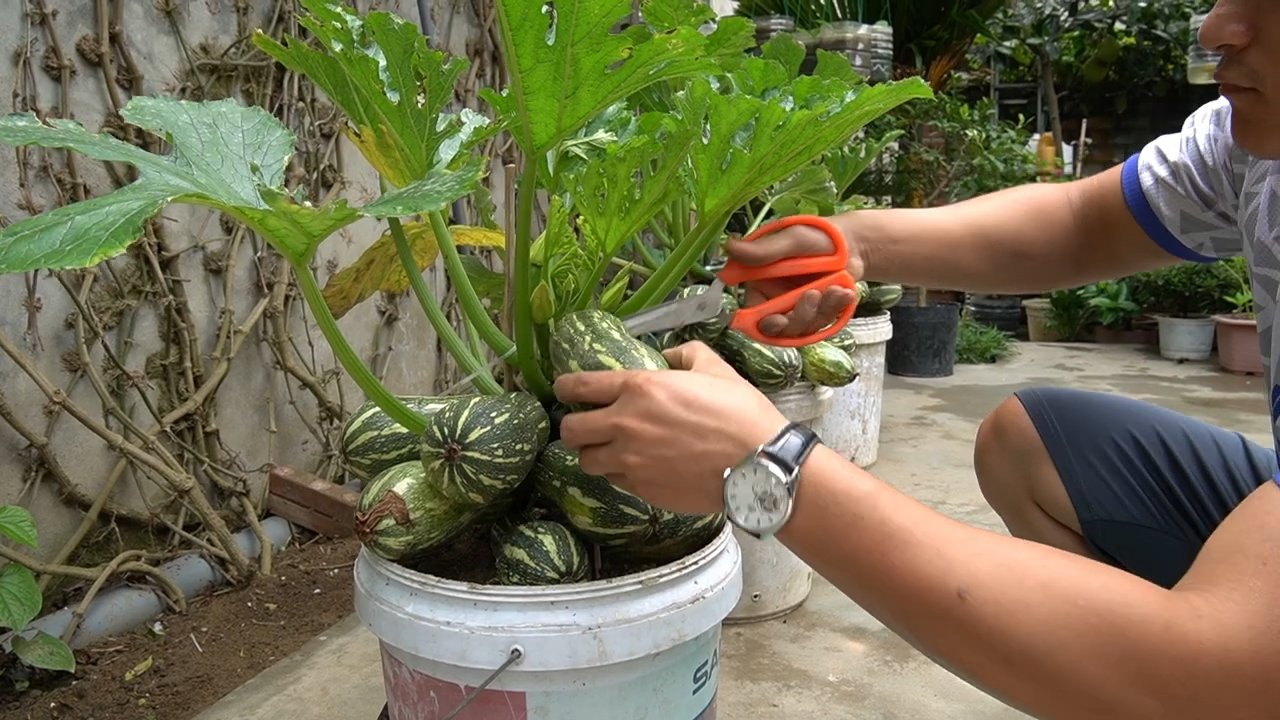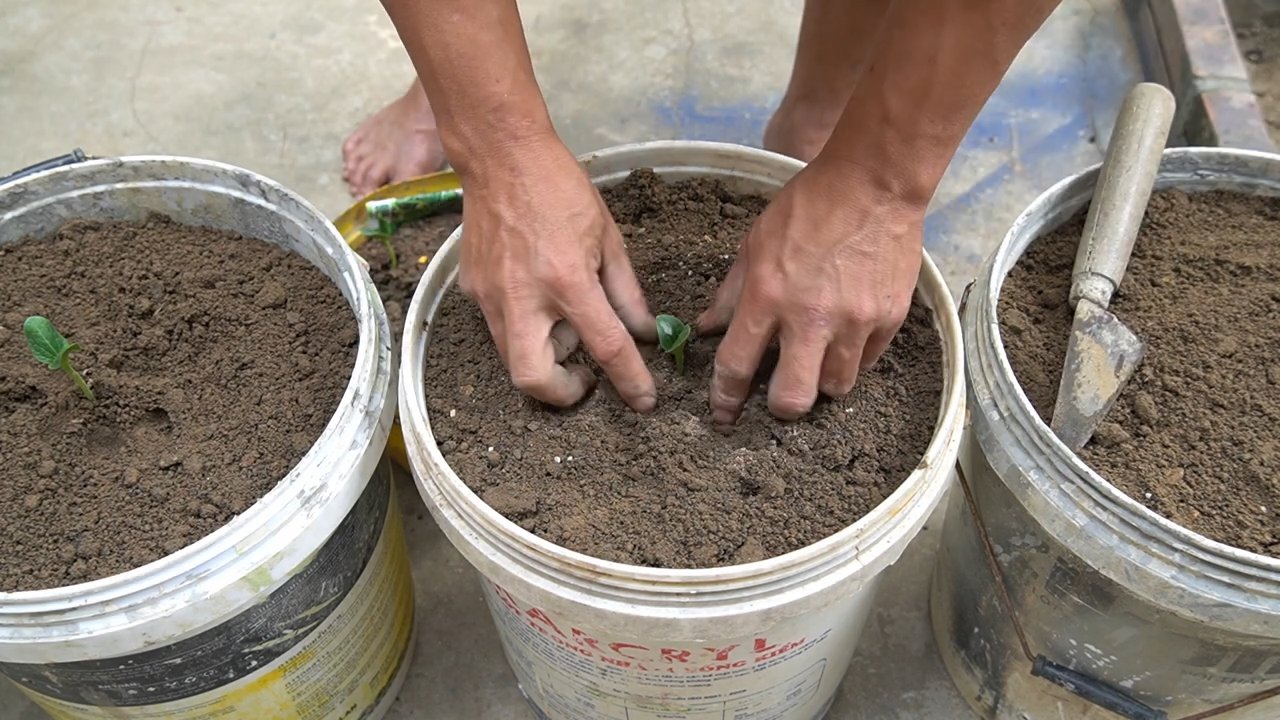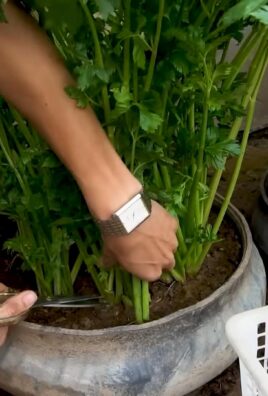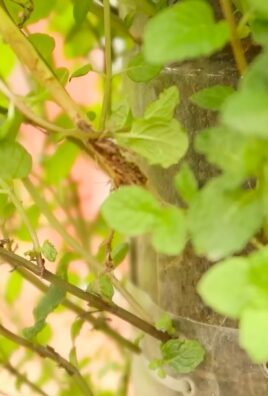Zucchini Growing at Home: Imagine stepping into your backyard and harvesting fresh, vibrant zucchini, ready to be transformed into delicious meals. Sounds idyllic, right? Well, it’s more achievable than you might think! For centuries, cultivating our own food has been a cornerstone of self-sufficiency and a connection to nature. From ancient kitchen gardens to modern-day urban farms, the desire to grow our own produce remains strong.
But let’s be honest, sometimes zucchini growing at home can feel like a battle against pests, diseases, and unpredictable weather. That’s where these DIY tricks and hacks come in! I’m going to share some simple, yet effective, techniques that will help you maximize your zucchini yield and minimize common problems. Whether you’re a seasoned gardener or just starting out, these tips will empower you to cultivate a thriving zucchini patch right in your own backyard.
Why do you need these DIY tricks? Because store-bought zucchini simply can’t compare to the taste and satisfaction of homegrown! Plus, you’ll know exactly where your food is coming from and what’s gone into it. So, grab your gardening gloves, and let’s dive into the world of successful zucchini cultivation!

Growing Zucchini Like a Pro: A DIY Guide
Hey there, fellow garden enthusiasts! I’m so excited to share my tried-and-true method for growing zucchini at home. Trust me, even if you think you have a black thumb, you can totally nail this. Zucchini is surprisingly easy to grow, and the reward of fresh, delicious veggies is absolutely worth it. Plus, you’ll have so much zucchini, you’ll be giving it away to all your neighbors! Let’s get started!
Choosing the Right Zucchini Variety
Before we even think about planting, let’s talk zucchini varieties. There are tons to choose from, and each has its own unique characteristics. Here are a few of my favorites:
* Black Beauty: This is a classic for a reason. It produces dark green, almost black, zucchini that are super versatile.
* Golden Zucchini: If you want something a little different, try golden zucchini. They have a beautiful yellow color and a slightly sweeter flavor.
* Costata Romanesco: This Italian heirloom variety has distinctive ridges and a nutty flavor. It’s a bit more challenging to find, but totally worth it if you can get your hands on it.
* Round Zucchini (Eight Ball, One Ball): These are perfect for stuffing! They’re cute, compact, and delicious.
Consider your space and your taste preferences when choosing a variety. Some varieties are bush types, meaning they stay relatively compact, while others are vining types and need more room to spread out.
Preparing Your Garden Bed
Zucchini plants are hungry, hungry hippos! They need nutrient-rich soil to thrive. Here’s how I prepare my garden bed:
* Sunlight: Zucchini needs at least 6-8 hours of direct sunlight per day. Choose a spot in your garden that gets plenty of sunshine.
* Soil: Zucchini prefers well-drained soil that is rich in organic matter.
* Compost: Amend your soil with plenty of compost. I like to add a thick layer of compost to my garden bed in the fall and let it break down over the winter. If you’re planting in the spring, add compost a few weeks before planting.
* pH Level: Zucchini prefers a soil pH between 6.0 and 7.5. You can test your soil pH with a soil testing kit. If your soil is too acidic, you can add lime to raise the pH. If it’s too alkaline, you can add sulfur to lower the pH.
* Spacing: Give your zucchini plants plenty of room to grow. Bush varieties need about 2-3 feet of space between plants, while vining varieties need 3-4 feet.
Planting Your Zucchini Seeds or Seedlings
Now for the fun part – planting! You can either start your zucchini seeds indoors or direct sow them in your garden. I usually direct sow because it’s easier, but starting indoors can give you a head start.
Starting Seeds Indoors (Optional)
1. Timing: Start your seeds indoors about 3-4 weeks before the last expected frost.
2. Containers: Use seed starting trays or small pots filled with seed starting mix.
3. Planting: Plant the seeds about 1 inch deep.
4. Watering: Keep the soil moist but not soggy.
5. Light: Provide plenty of light. A sunny windowsill or grow lights will work.
6. Hardening Off: Before transplanting your seedlings outdoors, you’ll need to harden them off. This means gradually exposing them to outdoor conditions over a period of about a week. Start by placing them in a sheltered spot outdoors for a few hours each day, gradually increasing the amount of time they spend outside.
Direct Sowing Seeds
1. Timing: Wait until the soil has warmed up to at least 60°F (15°C). This is usually a few weeks after the last expected frost.
2. Planting: Plant the seeds about 1 inch deep and 2-3 feet apart for bush varieties, or 3-4 feet apart for vining varieties.
3. Watering: Water the soil thoroughly after planting.
4. Marking: Mark the planting location so you know where you planted your seeds.
Transplanting Seedlings
1. Timing: Transplant your seedlings after the last expected frost, when the soil has warmed up to at least 60°F (15°C).
2. Digging: Dig a hole that is slightly larger than the root ball of your seedling.
3. Planting: Gently remove the seedling from its container and place it in the hole.
4. Backfilling: Backfill the hole with soil and gently firm the soil around the base of the plant.
5. Watering: Water the plant thoroughly after transplanting.
Caring for Your Zucchini Plants
Once your zucchini plants are in the ground, it’s important to give them the care they need to thrive.
* Watering: Zucchini plants need consistent moisture, especially during hot, dry weather. Water deeply at the base of the plant, avoiding getting the leaves wet. Aim for about 1 inch of water per week.
* Fertilizing: Feed your zucchini plants with a balanced fertilizer every few weeks. I like to use a liquid fertilizer diluted to half strength.
* Mulching: Mulch around your zucchini plants with straw, wood chips, or other organic material. This will help to retain moisture, suppress weeds, and regulate soil temperature.
* Weeding: Keep your garden bed free of weeds. Weeds compete with zucchini plants for nutrients and water.
* Pest Control: Keep an eye out for pests like squash bugs, squash vine borers, and aphids. You can control these pests with insecticidal soap, neem oil, or by handpicking them off the plants.
* Pollination: Zucchini plants need to be pollinated in order to produce fruit. If you’re not seeing any zucchini forming, you may need to hand-pollinate the flowers. To do this, use a small paintbrush to transfer pollen from the male flowers to the female flowers. Male flowers have a long, thin stem, while female flowers have a small zucchini growing behind the flower.
Harvesting Your Zucchini
Harvesting zucchini is the most rewarding part! You’ll be amazed at how quickly these plants produce.
* Timing: Harvest your zucchini when they are young and tender, usually about 6-8 inches long. Overgrown zucchini can be tough and seedy.
* Cutting: Use a sharp knife to cut the zucchini from the plant.
* Frequency: Check your zucchini plants every day or two during peak season. They grow incredibly fast!
* Storage: Store zucchini in the refrigerator for up to a week.
Dealing with Common Zucchini Problems
Even with the best care, you might encounter a few problems along the way. Here are some common issues and how to deal with them:
* Powdery Mildew: This fungal disease can cause a white, powdery coating on the leaves. To prevent powdery mildew, make sure your plants have good air circulation and avoid getting the leaves wet when watering. If you see signs of powdery mildew, you can treat it with a fungicide.
* Squash Bugs: These pests can suck the sap from zucchini plants, causing them to wilt and die. You
Hey there, fellow garden enthusiasts! I’m so excited to share my tried-and-true method for growing zucchini at home. Trust me, even if you think you have a black thumb, you can totally nail this. Zucchini is surprisingly easy to grow, and the reward of fresh, delicious veggies is absolutely worth it. Plus, you’ll have so much zucchini, you’ll be giving it away to all your neighbors! Let’s get started!
Choosing the Right Zucchini Variety
Before we even think about planting, let’s talk zucchini varieties. There are tons to choose from, and each has its own unique characteristics. Here are a few of my favorites:
* Black Beauty: This is a classic for a reason. It produces dark green, almost black, zucchini that are super versatile.
* Golden Zucchini: If you want something a little different, try golden zucchini. They have a beautiful yellow color and a slightly sweeter flavor.
* Costata Romanesco: This Italian heirloom variety has distinctive ridges and a nutty flavor. It’s a bit more challenging to find, but totally worth it if you can get your hands on it.
* Round Zucchini (Eight Ball, One Ball): These are perfect for stuffing! They’re cute, compact, and delicious.
Consider your space and your taste preferences when choosing a variety. Some varieties are bush types, meaning they stay relatively compact, while others are vining types and need more room to spread out.
Preparing Your Garden Bed
Zucchini plants are hungry, hungry hippos! They need nutrient-rich soil to thrive. Here’s how I prepare my garden bed:
* Sunlight: Zucchini needs at least 6-8 hours of direct sunlight per day. Choose a spot in your garden that gets plenty of sunshine.
* Soil: Zucchini prefers well-drained soil that is rich in organic matter.
* Compost: Amend your soil with plenty of compost. I like to add a thick layer of compost to my garden bed in the fall and let it break down over the winter. If you’re planting in the spring, add compost a few weeks before planting.
* pH Level: Zucchini prefers a soil pH between 6.0 and 7.5. You can test your soil pH with a soil testing kit. If your soil is too acidic, you can add lime to raise the pH. If it’s too alkaline, you can add sulfur to lower the pH.
* Spacing: Give your zucchini plants plenty of room to grow. Bush varieties need about 2-3 feet of space between plants, while vining varieties need 3-4 feet.
Planting Your Zucchini Seeds or Seedlings
Now for the fun part – planting! You can either start your zucchini seeds indoors or direct sow them in your garden. I usually direct sow because it’s easier, but starting indoors can give you a head start.
Starting Seeds Indoors (Optional)
1. Timing: Start your seeds indoors about 3-4 weeks before the last expected frost.
2. Containers: Use seed starting trays or small pots filled with seed starting mix.
3. Planting: Plant the seeds about 1 inch deep.
4. Watering: Keep the soil moist but not soggy.
5. Light: Provide plenty of light. A sunny windowsill or grow lights will work.
6. Hardening Off: Before transplanting your seedlings outdoors, you’ll need to harden them off. This means gradually exposing them to outdoor conditions over a period of about a week. Start by placing them in a sheltered spot outdoors for a few hours each day, gradually increasing the amount of time they spend outside.
Direct Sowing Seeds
1. Timing: Wait until the soil has warmed up to at least 60°F (15°C). This is usually a few weeks after the last expected frost.
2. Planting: Plant the seeds about 1 inch deep and 2-3 feet apart for bush varieties, or 3-4 feet apart for vining varieties.
3. Watering: Water the soil thoroughly after planting.
4. Marking: Mark the planting location so you know where you planted your seeds.
Transplanting Seedlings
1. Timing: Transplant your seedlings after the last expected frost, when the soil has warmed up to at least 60°F (15°C).
2. Digging: Dig a hole that is slightly larger than the root ball of your seedling.
3. Planting: Gently remove the seedling from its container and place it in the hole.
4. Backfilling: Backfill the hole with soil and gently firm the soil around the base of the plant.
5. Watering: Water the plant thoroughly after transplanting.
Caring for Your Zucchini Plants
Once your zucchini plants are in the ground, it’s important to give them the care they need to thrive.
* Watering: Zucchini plants need consistent moisture, especially during hot, dry weather. Water deeply at the base of the plant, avoiding getting the leaves wet. Aim for about 1 inch of water per week.
* Fertilizing: Feed your zucchini plants with a balanced fertilizer every few weeks. I like to use a liquid fertilizer diluted to half strength.
* Mulching: Mulch around your zucchini plants with straw, wood chips, or other organic material. This will help to retain moisture, suppress weeds, and regulate soil temperature.
* Weeding: Keep your garden bed free of weeds. Weeds compete with zucchini plants for nutrients and water.
* Pest Control: Keep an eye out for pests like squash bugs, squash vine borers, and aphids. You can control these pests with insecticidal soap, neem oil, or by handpicking them off the plants.
* Pollination: Zucchini plants need to be pollinated in order to produce fruit. If you’re not seeing any zucchini forming, you may need to hand-pollinate the flowers. To do this, use a small paintbrush to transfer pollen from the male flowers to the female flowers. Male flowers have a long, thin stem, while female flowers have a small zucchini growing behind the flower.
Harvesting Your Zucchini
Harvesting zucchini is the most rewarding part! You’ll be amazed at how quickly these plants produce.
* Timing: Harvest your zucchini when they are young and tender, usually about 6-8 inches long. Overgrown zucchini can be tough and seedy.
* Cutting: Use a sharp knife to cut the zucchini from the plant.
* Frequency: Check your zucchini plants every day or two during peak season. They grow incredibly fast!
* Storage: Store zucchini in the refrigerator for up to a week.
Dealing with Common Zucchini Problems
Even with the best care, you might encounter a few problems along the way. Here are some common issues and how to deal with them:
* Powdery Mildew: This fungal disease can cause a white, powdery coating on the leaves. To prevent powdery mildew, make sure your plants have good air circulation and avoid getting the leaves wet when watering. If you see signs of powdery mildew, you can treat it with a fungicide.
* Squash Bugs: These pests can suck the sap from zucchini plants, causing them to wilt and die. You can control squash bugs by handpicking them off the plants, using insecticidal soap, or covering your plants with row covers.
* Squash Vine Borers: These pests bore into the stems of zucchini plants, causing them to wilt and die. To prevent squash vine borers, wrap the base of your plants with aluminum foil or pantyhose. If you see signs of squash vine borers, you can try to remove them by slitting the stem and pulling them out.
* Blossom End Rot: This condition causes the blossom end of the zucchini to rot. It’s usually caused by a calcium deficiency or inconsistent watering. To prevent blossom end rot, make sure your soil is rich in calcium and water your plants regularly.
Recipes and Ideas for Using Your Zucchini
Now that you have a mountain of zucchini, what are you going to do with it all? Here are a few of my favorite recipes and ideas:
* Grilled Zucchini: Slice zucchini lengthwise, brush with olive oil, and grill until tender.
* Zucchini Bread: A classic! There are tons of zucchini bread recipes online.
* Zucchini Noodles (Zoodles): Use a spiralizer to turn zucchini into noodles. Toss with your favorite sauce.
* Stuffed Zucchini: Hollow out zucchini and fill with a mixture of ground meat, rice, and vegetables.
* Zucchini Fritters: Grate zucchini and mix with flour, eggs, and seasonings. Fry until golden brown.
* Zucchini Soup: A

Conclusion
So, there you have it! Growing zucchini at home is not only achievable, even for those with limited space or gardening experience, but it’s also incredibly rewarding. Forget those bland, store-bought zucchini – imagine the vibrant flavor and satisfying crunch of a freshly picked zucchini, grown with your own two hands. This DIY approach to zucchini cultivation unlocks a world of culinary possibilities and connects you directly to the source of your food.
Why is this a must-try? Because it empowers you to control the quality of your produce. You know exactly what goes into your zucchini – no harmful pesticides, no questionable fertilizers, just good old-fashioned care and attention. Plus, the taste difference is undeniable. Homegrown zucchini boasts a sweetness and tenderness that you simply can’t find in commercially grown varieties.
Beyond the basic method, there’s plenty of room for experimentation. Consider trying different zucchini varieties – from the classic Black Beauty to the golden-hued Gold Rush or the round, adorable Eight Ball. Each variety offers a unique flavor profile and texture, adding exciting diversity to your zucchini harvest. You can also explore companion planting to enhance your zucchini’s growth and deter pests naturally. Marigolds, nasturtiums, and basil are excellent choices for planting alongside your zucchini.
Don’t be afraid to get creative with your growing setup. If you’re short on space, try growing zucchini in containers on your balcony or patio. Just be sure to choose a large container (at least 24 inches in diameter) and provide adequate support for the sprawling vines. Vertical gardening is another option, using trellises or cages to train the zucchini plants upwards.
But the real magic happens when you start incorporating your homegrown zucchini into your meals. From classic zucchini bread and fritters to grilled zucchini salads and stuffed zucchini boats, the possibilities are endless. And don’t forget the zucchini blossoms! These delicate flowers are a culinary delicacy, perfect for stuffing with ricotta cheese and frying until golden brown.
We wholeheartedly encourage you to embark on this **zucchini growing at home** adventure. It’s a fun, educational, and ultimately delicious experience that will transform the way you think about food.
And most importantly, we want to hear about your experiences! Share your tips, tricks, and triumphs in the comments below. What varieties did you grow? What challenges did you face? What delicious dishes did you create? Your insights will help other aspiring zucchini growers and inspire us all to cultivate a greener, more sustainable lifestyle. So, grab your seeds, get your hands dirty, and let’s grow some zucchini together!
Frequently Asked Questions (FAQ)
What is the best time to start growing zucchini?
The ideal time to start growing zucchini depends on your climate. Zucchini is a warm-weather crop and is sensitive to frost. In most regions, it’s best to start seeds indoors about 3-4 weeks before the last expected frost. Once the danger of frost has passed and the soil has warmed up, you can transplant the seedlings outdoors. If you live in a warmer climate with a long growing season, you can direct sow the seeds directly into the garden soil after the last frost. A soil temperature of 65-75°F (18-24°C) is optimal for germination.
How much sunlight does zucchini need?
Zucchini plants require at least 6-8 hours of direct sunlight per day to thrive. Insufficient sunlight can lead to weak growth, reduced fruit production, and increased susceptibility to diseases. Choose a sunny location in your garden or on your balcony where your zucchini plants will receive ample sunlight throughout the day. If you’re growing zucchini indoors, you may need to supplement with grow lights to provide adequate illumination.
What kind of soil is best for growing zucchini?
Zucchini plants prefer well-drained, fertile soil that is rich in organic matter. Amend your garden soil with compost, aged manure, or other organic materials to improve its drainage, fertility, and water-holding capacity. A slightly acidic to neutral soil pH of 6.0-7.5 is ideal for zucchini growth. Before planting, test your soil pH and amend it accordingly if necessary.
How often should I water my zucchini plants?
Zucchini plants need consistent moisture, especially during hot, dry weather. Water deeply and regularly, aiming to keep the soil consistently moist but not waterlogged. Water at the base of the plants to avoid wetting the foliage, which can increase the risk of fungal diseases. Mulching around the plants with straw, wood chips, or other organic materials can help retain moisture in the soil and suppress weed growth. As a general rule, water when the top inch of soil feels dry to the touch.
How do I deal with common zucchini pests and diseases?
Zucchini plants are susceptible to several pests and diseases, including squash bugs, squash vine borers, powdery mildew, and blossom end rot. Regularly inspect your plants for signs of pests or diseases and take action promptly to prevent them from spreading. Handpicking pests, using insecticidal soap, and applying neem oil are effective methods for controlling many common zucchini pests. To prevent powdery mildew, ensure good air circulation around the plants and avoid overhead watering. Blossom end rot is caused by calcium deficiency, so amend your soil with calcium-rich materials like bone meal or crushed eggshells.
Why are my zucchini flowers falling off without producing fruit?
This is a common issue called blossom drop. Several factors can contribute to blossom drop in zucchini plants, including inadequate pollination, temperature stress, and nutrient deficiencies. Zucchini plants have separate male and female flowers, and pollination is necessary for fruit development. If pollination is insufficient, the female flowers will wither and fall off. You can hand-pollinate the flowers by transferring pollen from the male flowers to the female flowers using a small brush. High temperatures (above 90°F or 32°C) can also cause blossom drop, as can nutrient deficiencies, particularly nitrogen and phosphorus. Ensure your plants are receiving adequate nutrients and water, and provide shade during the hottest part of the day if necessary.
How do I know when to harvest zucchini?
Zucchini is best harvested when it is young and tender, typically when it is 6-8 inches long. Overripe zucchini can become tough, seedy, and less flavorful. Use a sharp knife to cut the zucchini from the plant, leaving a short stem attached. Harvest regularly to encourage continued fruit production. Zucchini blossoms can also be harvested and used in culinary dishes. Pick the blossoms in the morning when they are fully open.
Can I grow zucchini in containers?
Yes, you can successfully grow zucchini in containers, but it’s important to choose a large container (at least 24 inches in diameter) to accommodate the plant’s root system. Use a well-draining potting mix and provide adequate support for the sprawling vines. Water regularly and fertilize every 2-3 weeks with a balanced fertilizer. Container-grown zucchini plants may require more frequent watering and fertilization than those grown in the ground.
What are some creative ways to use homegrown zucchini?
The possibilities are endless! Beyond the classics like zucchini bread and fritters, try grilling zucchini slices and adding them to salads or sandwiches. You can also shred zucchini and add it to muffins, pancakes, or even meatloaf. Stuffed zucchini boats are a delicious and healthy meal option. And don’t forget the zucchini blossoms! They can be stuffed with ricotta cheese and fried, or added to soups and salads. Get creative and experiment with different recipes to discover your favorite ways to enjoy your homegrown zucchini.




Leave a Comment